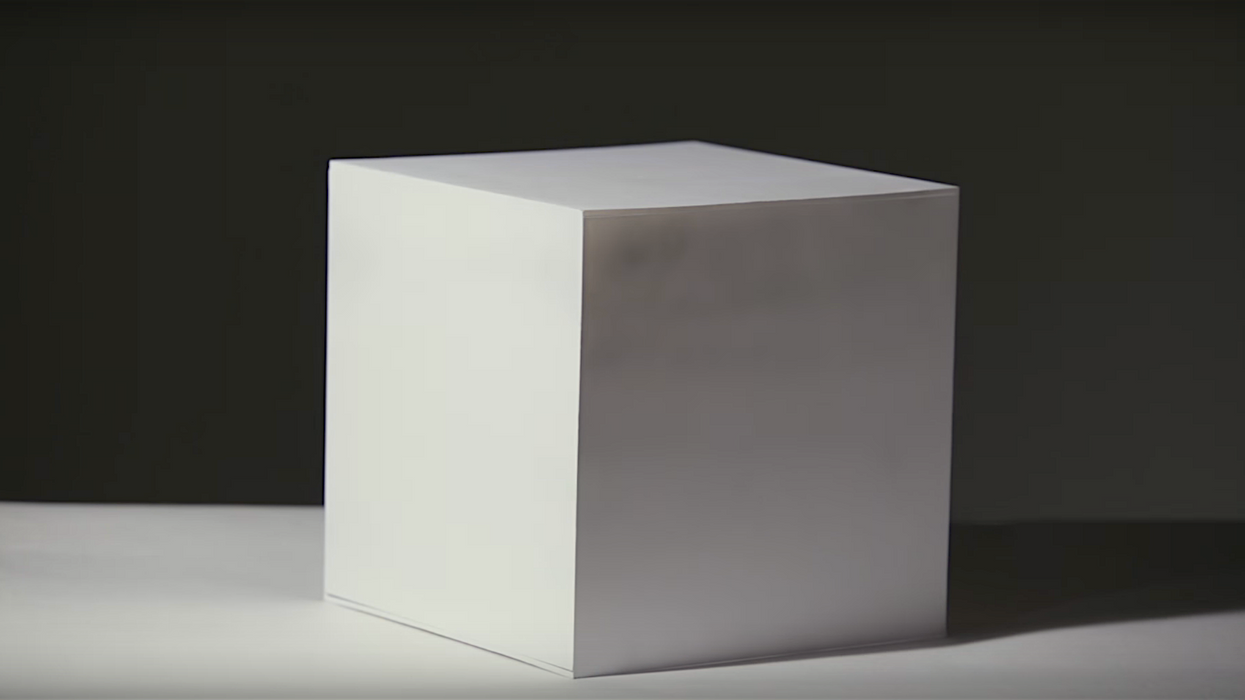Watch: How to Use Basic Principles of Lighting to Create Dimension
If you want to learn how to create depth with lighting, a good place to start is with the cube.

Filmmakers work in a two-dimensional medium, and because of this are always looking for ways to add dimension to compositions. One way we do this is with lighting. In the second installment of his "Laws of Light" series, Jay P. Morgan of The Slanted Lens shows you how create depth by lighting a cube in an effort to explain some basic lighting principles that will inform virtually all of the decisions you make as a filmmaker/cinematographer.
This concept of "depth" is probably not new to most filmmakers, but some may be wondering why so much attention is placed on creating it in the first place. Well, as I said before, we work in a two-dimensional medium and according to aesthetic theory—two-dimensional compositions are pretty boring to look at. So, we increase the aesthetic energy by using different lighting and blocking techniques to allow our audience to perceive depth, which effectively "pulls" them into the image so they can become more engaged.
Morgan demonstrates several approaches to lighting for depth in his video, which are incredibly helpful, but I think the big takeaway from his lesson is something we mentioned in a previous article: to practice and experiment with smaller setups. Grab a cube or a cereal box and go to town. Position your subject, camera, and lights in different ways, come up with every combination you can until you've learned how light behaves in every kind of situation. And considering how ubiquitous cubes are in everyday life (cars, buildings, etc.), that kind of knowledge would serve you well.
Source: The Slanted Lens











